Making the Adi Kailash Yatra Trek is not only an outer journey through the stunning Himalayas beauties but it is also an inner inward journey to one of the most sacred places in Hinduism.
At the end of Uttarakhand’s remote corners Adi Kailash, the Chhota Kailash brings a happy blend of tempting trekking and tranquil spiritual experiences.
The following advisory will make sure you get the best out of your Adi Kailash Yatra and guide you through every aspect of the trip, hence ensuring a smooth and joyous journey.
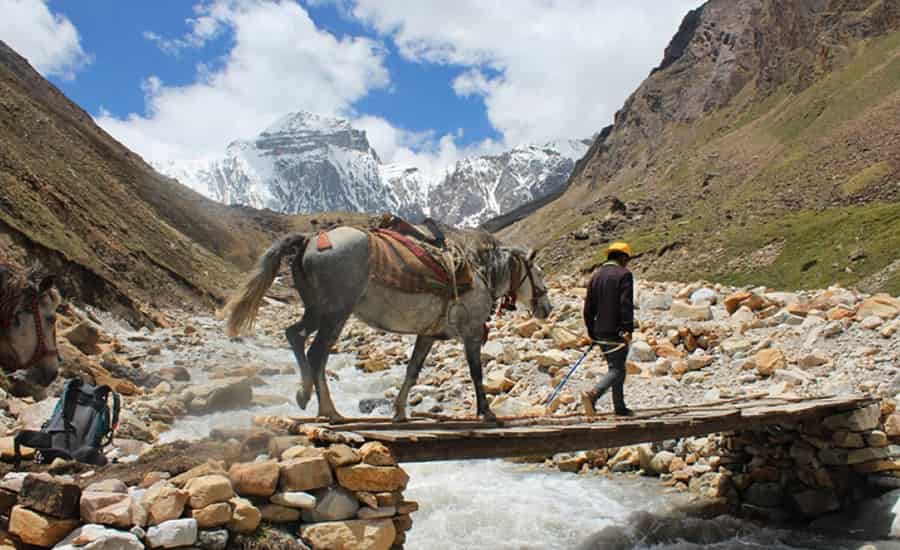
Trekking Highlights
- Kathgodam/Haldwani: The initial point of the trek where the trekkers and/ or pilgrims rejuvenate themselves and go towards Patal Bhuvaneshwar.
- Dharchula: This is a small village in Uttarakhand close to the Tibetan border, which is the beginning of the treks of Adi Kailash and Kailash Mansarovar. It is situated close to the boundary between India and Nepal, separated by the Kali River.
- Kalapani: Well-known for its Kali Temple, where pilgrims come for blessings. We have camps here where you can always stay, and it is near the border of China. Trekkers will encounter beautiful hamlets and villages and go to spectacular meadows and forests.
- Nabhidhang and Old Lipu: To proceed to Nabhidhang for Om Parvat Darshan trekkers may also have darshan in Old Lipu if permission is granted.
- Kuti: This is a place that has got the name after Mata Kunti of the Mahabharata, which is also an important place during the yatras. The travelers go to either Sheshnag Parvat, Vyas Gufa, Kali Temple, or Om Parvat.
- Adi Kailash and Parvati Kund: The main attraction of the trail, where the travelers go to the Shiva temple and can also have a holy dip at Parvati Kund.
- Jolingkong: A second sacred site to be visited on the journey
- Pithoragarh: A unique scenic place that travelers stop before they start going home. It is a spectacular sight with the most pleasant weather.
- Mayawati Ashram: It is also called Vivekananda Ashram, and we visit it on the way back, and one can enjoy the peace of mind while meditating.
- Lohaghat and Tanakpur: It’s on the way back to Kathgodam/Haldwani, offering opportunities to take pleasure in the lunch and beautiful views.
- Return to Haldwani/Kathgodam: The last stop of the trip i.e journey to Adi Kailash and Om Parvat.
Physical Fitness
- Do a proper body workout for 2-3 months before the trekking.
- Consider exercises for cardiovascular system, strength training, and endurance performance.
- Get affirmation from a healthcare provider before you start any fitness program.
- All physically fit individuals aged between 18-70 years can participate in Adi- Kailash Yatra.
- You will also require a certificate of Physical fitness authenticated by any MBBS Doctor by 15 days before beginning the yatra.
- Drink enough water and eat well while touring Adi Kailash Om Parvat Yatra, and do not fast under high altitudes preferably.
- Mental Preparedness
- Be aware of the high-altitude trekking difficulties and prepare psychologically for the journey.
- Practice mindfulness and meditation to improve mental strength.
Acclimatization
- Spend one or two days at the base camp to get used to the high altitude.
- Stay hydrated and avoid drinking alcohol and coffee.
Adi Kailash Trek Difficulty Level
The Adi Kailash Trek is challenging, but not impossible. The Trek of Adi Kailash is graded as Moderate to Difficult and calls for a reasonable level of physical fitness.
Essential Gear and Packing
Clothing and other things to carry
- Wind-cheater jacket 1 no.
- Sweaters 2 full sleeves 1 half sleeve
- Jacket Good quality 1 no.
- Woolen and leather gloves 1 pair each
- Woolen/cotton inners 2 pairs
- Woolen socks 4 pairs
- Cotton socks 4 pairs
- Jeans Pants 3 nos.
- Trek suit 1 nos.
- Shirts/T-shirt full sleeves 6 nos.
- Sun glasses (good quality)
- Trekking shoes 1 pair (good quality)
- Peaked cap or broad brimmed straw
- Water bottle (large) 1 no. hat 1 no. (for protection against the sun)
- Small LED torch light (carry two sets of extra
- Raincoat (large size) 1 no. cells and one bulb) 1 no.
- Belt pouch for camera/money/
- Large Plastic sheet for water medicines/documents 1 no. proofing your luggage 1 no.
- Toilet paper
- Rucksack with cover for luggage 1 nos.
- Sunscreen lotion (for sunburn)
- Small Rucksack for trekking 1 nos.
- Rubber slippers 1 no.
- Multipurpose knife 1 no.
- Balaclava (Monkey cap) 1 no.
- Medicines.
Footwear
- Invest in durable and comfortable walking boots.
- Keep some extra pairs of moisture-wicking socks.
Backpack
- Be sure to select a backpack with proper back support.
- Pack your bag with essentials such as water bottles, energy snacks, first aid bag and a sleeping bag.
Sleeping Arrangements
Bring a lightweight and compact sleeping bag that can provide warmth even in low temperatures.
Travel Logistics
- The applicant must possess an acceptable government ID proof, such as Aadhar Card/ Passport/ voter ID/ Driving license.
- Because we are in the Indo-Nepal border zone, the permit known as an Inner line permit is needed for visit to Adi Kailash & Om Parvat issued by SDM in Dharchula.
Transportation
- Begin your journey to reach the base camp, properly located at Gunji or Dharchula.
- Provide for transport with local options such as shared taxis and buses.
Guides and Porters
- Look into getting a guide who knows the area well and the terrain to ensure safety and efficiency.
- Carrying a backpack often will be a challenge, go for porters.
- The Atmosphere and The Best Period to Visit
Seasonal Considerations
- The peak season for the Adi Kailash Yatra is from June to September.
- It is not recommended to come during winter because of heavy snowfall and extreme cold.
Temperature Fluctuations
- Be sure of a different temperature range as it will be hot in the daytime and freezing during the night.
- Cultural Sensitivity and Respect
Local Customs
- Become aware of the local etiquette and cultural norms.
- Be respectful of religious sites and practices.
Communication
- Know the basic local phrases, so you can communicate with the locals.
- Be mindful and obtain permission from the locals before you take photos of them.
Health and Safety
Altitude Sickness
- Get familiar with the symptoms of altitude sickness.
- Carry the necessary medications that include Diamox as a precautionary measure.
Hydration and Nutrition
- Keep the water bottle close and drink regularly to stay hydrated.
- Pack your bag with high calorie snacks, which you can munch on throughout the trek to keep you going.
Emergency Contacts
- Memorize the telephone numbers of close contacts for emergencies.
- Inform someone about your itinerary and keep regular check-ins.
Camp Etiquette
- Leave No Trace
- Make use of the principles of Leave No Trace to limit the impact made on the environment.
- Dispose of waste responsibly.
- Respect Wildlife
- Watch wildlife from a distance without interfering with their natural behavior patterns.
Campsite Selection
- Select camping areas marked out by the authorities and practice responsible camping by adhering to the guidelines set forth.
Spiritual Practices
Rituals and Ceremonies
- Be a part of the local rituals and ceremonies when you are invited.
- Always keep a respectful attitude while you are at the religious sites.
Assistance from Local Spiritual Guide
For a more enlightened experience, consult the local spiritual leaders.
Photography and Documentation
Photography Guidelines
- Observe photography restrictions at religious sites.
- The beauty of the environment must be captured without sacrificing its sacrosanctity.
Journaling
- Be sure to keep a journal as you set out to describe your pilgrimage and trekking experiences.
Post-Trek Reflection
Integration of Experience
- Spend time thinking over the spiritual and the personal lessons the journey has offered to you.
- Think how the hike has changed the way you see life.
Gratitude
- Thank the local community and nature for the rich experience you have had.
- Share your experiences with other trekkers and friends.
Dos and Don’ts
Do’s:
- Ensure physical fitness.
- Acclimate to high altitudes.
- Pack appropriate gear.
- Stay hydrated.
- Respect local culture.
- Follow the trekking schedule.
- Dispose of waste properly.
- Consult with a doctor.
- Obtain travel insurance.
- Get necessary permits.
Don’ts:
- Avoid alcohol and smoking.
- Take it slow; stick to the itinerary.
- Respect wildlife; avoid disturbance.
- Do not litter, pack out waste.
- Respect religious practices.
- Stick to designated paths.
- Avoid arguments; maintain harmony.
- Don’t carry too much luggage; go lightweight.
- Don’t disturb local flora.
- Pay your attention to the symptoms of altitude sickness.
Conclusion
Beginning Adi Kailash Yatra Trek is not a mere physical test but a holy pilgrimage. Through proper planning, understanding the local customs, and getting connected with the spiritual nature of the hike, you will be able to truly enjoy this transforming journey. These travel tips are the keys you need to unlock the surprise of Adi Kailash, the most beautiful place where you will go on the road through the very heart of the Himalayas.


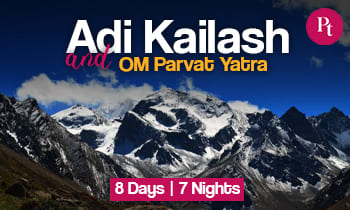
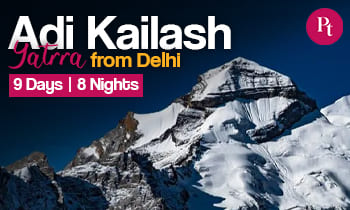
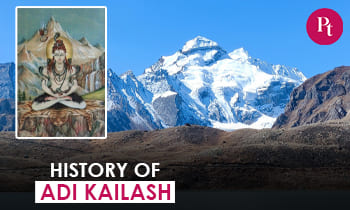
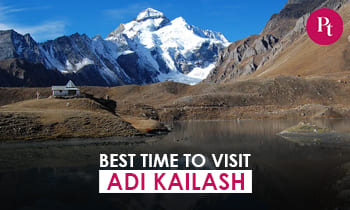
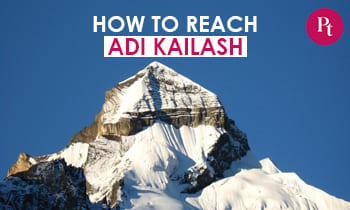
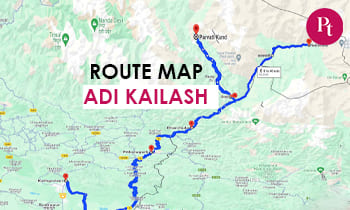
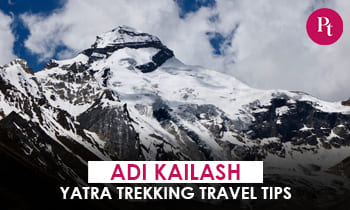
 Call
Call WhatsApp
WhatsApp Enquiry
Enquiry